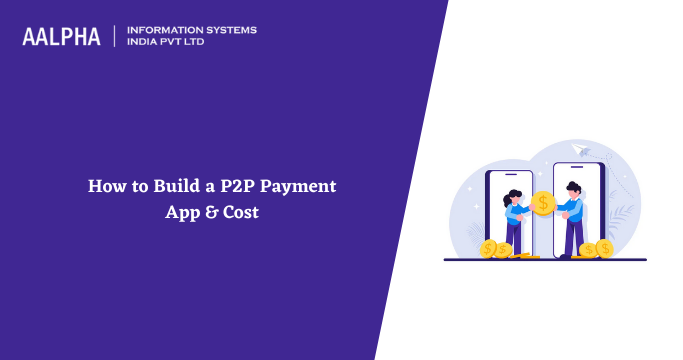For a long time, technology and the digital revolution streamlined many parts of our lives, saving us time and effort in a variety of ways. Thanks to the proliferation of mobile payment applications and wallets, making payments is no longer as difficult as it once was.
The most effective mobile application platforms are peer-to-peer payment applications, making sending and receiving money simple and easy. In comparison to other payment applications, peer-to-peer payment apps have acquired more significant popularity. This post will explore what a peer-to-peer payment app is, its benefits, problems, and the cost of developing one.
What is a peer-to-peer payment application?
P2P refers to peer-to-peer or person-to-person communication. Peer to peer payment applications enables individuals to send payments from their bank account to another individual’s bank account. The usage of peer-to-peer payment applications has grown in popularity in several nations worldwide.
A peer-to-peer payment program created in the United States of America may be used to pay rent payments, taxi services, utility bills, and bill splitting, among other things.
Include the Following Features in Your Peer-to-Peer Payment Application
When you engage specialist developers specializing in iPhone application development, you must ensure that they include certain critical aspects. These features will be critical to your app’s success, and without them, it would be hard to survive in the present market.
-
Notification
Notifications alert the user when a payment is received or initiated. If you hire app developers, make sure they include the notification function. Some P2P payment apps also notify you of bill due dates.
-
Fingerprint Access Control Lock
P2P payment programmes are risky due to the sensitive passwords and bank information they include. These are why mobile app development companies need to guarantee that their apps are secure. A fingerprint lock in the programme ensures that only the user gets access to the account.
-
Transfer of Funds
Your P2P payment app must be flexible enough to allow direct bank account transfers. There are many P2P payment software options, each with its business model.
How to Begin the App Development Process:
While there are several app clones to consider as you go ahead in the mobile payment app sector, the following characteristics will assist you in launching a superior solution:
-
Accept Payments through All Major Online Payment Methods
Your mobile payment app’s primary function is to enable your user to make an online payment. Therefore, to meet all your clients’ expectations, ensure that your online payment system supports the following online payment methods:
- Payments through peer-to-peer via e-commerce
- Transfers of funds to merchants on the spot
-
Never divulge a user’s credit/debit card information
Whether you pay with cash or a credit card, each means of payment entails some amount of protection and safety. Additionally, when sending money through an application, developers should priorities adding a mobile payment gateway.
Because integrating this feature is hard, it is advised that you employ an app developer who can build your app in such a manner that it delivers protected code or requires fingerprint identification to increase the degree of security when utilizing permitted transactions.
However, some of the most popular payment applications make use of the following:
- User authentication in two steps
- PCI-DSS and other regulatory compliance with data encryption
-
Avoid Overburdening Your Payment Application With Multiple Disruptions
If you are not seeing the same increase in user base as Apple Pay or PayPal, you are almost certainly experiencing a steady increase in strain on your system. No matter how complicated or straightforward your mobile payment app is, the load will eventually become overwhelming and cause interruption.
Therefore, it is worthwhile to hire a mobile app development company that can assist you in developing a highly scalable, resilient, and adaptable application to avoid the system being overloaded. They will begin developing the cluster solution during the initial phase of development. Indeed, they will strengthen your system’s potential to expand proportionately to its rising user base.
-
Selecting the Appropriate Technology
Now that this is the center of your application, the mobile app technology stack you choose will determine the quality of the user experience. Indeed, it is critical for your mobile payment application. If you want to design a cross-platform application, it is advised that you investigate cross-platform frameworks like Flutter or React Native.
P2P payment app development cost
The cost of establishing a mobile payment app relies mainly on employing specialist mobile app developers. Developing a P2P payment software is costly, and it needs a lot of experts to design
The cost of building a P2P payment app ranges from $20,000 to over $80,000, depending on the functionality included in the app. The number of developers, location of developers, and team size significantly affect the cost of development.
Concluding
To summarize, these guidelines will assist you in meeting customer demands and enabling you to provide an exceptional user experience when it comes to paying using applications like Venmo, PayPal, and Apple Pay.
Planning to develop a P2P payment app? feel free to contact us & get a free quotation today!
